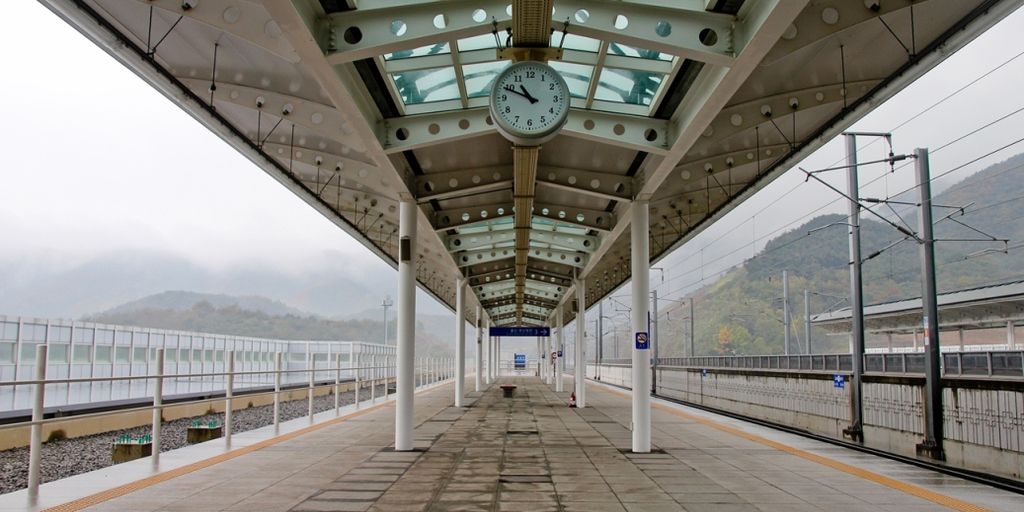
Busan, South Korea’s second-largest city, is a treasure trove of historical sites that offer a glimpse into its rich and diverse past. From ancient fortresses and tombs to bustling markets and modern history museums, Busan provides a fascinating journey through time for history enthusiasts and casual visitors alike. This article explores the top historical sites in Busan that you shouldn’t miss.
Key Takeaways
- Busan is home to a variety of historical sites, including ancient fortresses, tombs, and bustling markets.
- Geumjeong Fortress South Gate and Dongnaeeupseong Fortress Site offer a glimpse into Busan’s military history.
- The Busan Modern History Museum provides insights into the city’s more recent past.
- Bokcheon Ancient Tombs Park is a must-visit for those interested in ancient history and archaeology.
- Markets like Gukje Market and Bupyeong-dong Kkangtong Market showcase the vibrant commercial history of Busan.
1. Geumjeong Fortress South Gate

Geumjeong Fortress South Gate is a must-visit historical site in Busan. Located about 12.9km from downtown, this site offers a glimpse into Korea’s military past. The fortress was originally built to protect the region from invasions and has been partially restored to give visitors a sense of its original grandeur.
When you visit, you can:
- Walk along the ancient walls
- Enjoy the scenic views of the surrounding mountains
- Learn about the history of the fortress and its role in defending the area
The serene environment around the fortress makes it a perfect spot for a peaceful stroll and a history lesson all in one.
2. Busan Modern History Museum
The Busan Modern History Museum is located in a modern and spacious building. The displays and exhibits are located on the upper floors accessible by both escalator and elevator. This museum used to be the building of the Oriental Development Company during the Japanese occupation. It gives you a quick look at Busan’s modern history. After Korea’s Independence, the US Army used this building as the Busan Cultural Center of the US Overseas Bureau of Public Information. Thanks to the persistent demand for the return of the building to the city, the Busan Modern History Museum now stands here.
3. Bokcheon Ancient Tombs Park
Take a walking tour through Bokcheon Ancient Tombs Park and discover burial mounds dating back to the Gaya confederacy (AD 532-42). This park is a great place to learn about ancient Korean history while enjoying a peaceful stroll.
Bokcheon Ancient Tombs Park hosts over 40 burial mounds. It’s amazing to see how well-preserved these mounds are! The park is green and serene, making it a perfect spot for a relaxing walk.
Don’t miss the Bokcheon Museum nearby. It has armour, weapons, clothing, tools, and pottery unearthed from the burial mounds. It’s like stepping back in time!
4. Dongnaeeupseong Fortress Site
Dongnaeeupseong Fortress Site is a great place to explore if you love history. It’s good to take a walk around the fortress, especially during cherry blossom season. The fortress is located about 11.2km from downtown Busan, making it easily accessible for a day trip.
You can start your visit by walking along the rebuilt walls of the fortress. This will give you a sense of the scale and importance of this historical site. Don’t miss the Dongnae Eupseong History Hall, where you can see a miniature model of the walled town.
The picturesque complex of Chungnyeolsa Shrine brings the area’s sobering history into sharp focus. It’s the ideal place to pay your respects to those daring Korean fighters who resisted foreign aggression over 400 years ago.
Other notable spots include the Dongnae-bu Magistrate’s Office and the Hyanggyo Local Confucian School. These sites offer a glimpse into the administrative and educational aspects of the past.
5. Yongdusan Park
Yongdusan Park is a leading landmark in Busan and a must-visit destination. Located in Nampo-dong, it’s a popular spot for both locals and tourists. The park is famous for its beautiful night view, especially from the Busan Tower Observation Deck, where you can see a magnificent view of Busanhang Port and the city’s nightscape.
Things to Do
- Visit the Busan Tower for a panoramic view.
- Enjoy a leisurely walk in the park.
- Check out the various sculptures and monuments.
Why Visit?
Yongdusan Park is a great place to relax and take in the sights. Whether you’re with family, friends, or loved ones, it’s a perfect spot for some quality time. The park is also a fantastic photo spot, so don’t forget your camera!
6. Gukje Market
Gukje Market is one of the most bustling and energetic places in Busan. There’s a saying in Busan that goes, "It’s like a Dottaegi Market," which means it’s loud and full of life. The market, also known as Dottaegi, is crowded with items and people, making it a lively spot to visit.
The market was originally established by refugees of the Korean War who started selling their products here. It became even more animated when various goods from American soldiers’ supplies were smuggled through Busanhang Port to the market. This history is captured in the popular Korean movie Ode to My Father.
You can find almost anything at Gukje Market, from clothes and electronics to traditional Korean items. It’s a place that truly "has it all." If you get hungry, there are plenty of food stalls offering delicious street food.
Walking through Gukje Market is like stepping into a different world, where the past and present collide in a vibrant display of culture and commerce.
7. Bupyeong-dong Kkangtong Market
Bupyeong-dong Kkangtong Market is a famous traditional market in Busan. The market’s name, "Kkangtong," means "can," which comes from the Korean War era when American soldiers’ canned goods were traded here. It’s right next to Gukje Market, so you can easily walk back and forth between the two.
At Bupyeong-dong Kkangtong Market, you’ll find a variety of delicious street foods. Some favorites include tteokbokki, eomuk (fish cake), guksu (noodles), and bindaetteok (mung bean pancake). The market is especially delightful at night when the aroma of food fills the air.
Explore Busan’s incredible past while you eat traditional street food on a guided tour through Bupyeong Kkangtong Market.
8. Bosu Book Street
Bosu Book Street is a special place in Busan where you can put a bookmark in your mind. This street is filled with old bookstores and has a unique retro vibe. It’s like taking a step back in time!
During the Korean War, refugees in Busan needed food and education for their children. Tent schools were set up, but finding textbooks was hard. That’s when Bosu Book Street was born. People could buy and sell secondhand books here. Even today, you can feel the history as you walk down the street.
If you love books, this is a must-visit spot. You can find all kinds of books, from old textbooks to rare finds. It’s a book lover’s paradise!
9. Forty Stairs
The Forty Stairs is a special place in Busan where you can recall the history of the Korean War. Located near Jungang Station of Busan Metro Line 1, these stairs were a shelter for refugees who yearned to go back to their hometowns. Climb the 40 steps to experience what life’s sorrow must have been like for the refugees.
The Forty Stairs served as a passage that connected Busanhang Port’s dock to the shantytown on the hillside. It was also a square where separated families met and a market for selling relief items. There used to be a saying, “Let’s meet by the Forty Stairs in Busan,” and some waited by the stairs believing these words.
The Forty Stairs is a place that contains the sorrows of a refugee’s burdensome life around Busan Station.
Nearby, you can visit the Memorial Hall of Forty Stairs, which was established to commemorate refugees’ lives and reflect on the painful history of the Korean War. This area became the center of the lives of the refugees gathered from all over the country to the old Busan Station building.
10. Jagalchi Fish Market
Busan’s original harbour district oozes history, and the Nampo-dong Tour uncovers the neighbourhood’s storied past by delving into the three street markets that make up its core. It all begins with Jagalchi Market, the 600-year-old fish market that defines Busan. A stroll down its frenzied concourse is more than just an assault on the senses, it’s also a portal into yesteryear.
What to Expect
- Fresh seafood: You can find all kinds of fish, shellfish, and other sea creatures.
- Bustling atmosphere: The market is always busy with people buying and selling.
- Unique experience: It’s not just a market; it’s a glimpse into Busan’s history.
Tips for Visiting
- Go early in the morning for the freshest catches.
- Wear comfortable shoes; you’ll be walking a lot.
- Don’t be afraid to haggle for the best prices.
Visiting Jagalchi Market is like stepping back in time. The sights, sounds, and smells are a unique experience you won’t forget.
Nearby Attractions
- Gukje Market: Another bustling market nearby.
- Bupyeong-dong Kkangtong Market: Known for its delicious street food.
- Yongdusan Park: A great place to relax after exploring the markets.
Conclusion
Exploring Busan’s historical sites is like taking a walk through time. From ancient fortresses to bustling markets and serene temples, the city offers a rich tapestry of history and culture. Whether you’re a history buff or just looking to soak in some local culture, Busan has something for everyone. So, pack your bags, grab your camera, and get ready to dive into the fascinating past of this vibrant city. Trust me, you won’t be disappointed!
Frequently Asked Questions
What is the best time to visit Busan’s historical sites?
The best time to visit Busan’s historical sites is during the spring (April to June) and autumn (September to November) when the weather is mild and pleasant.
Are there any guided tours available for these historical sites?
Yes, there are several guided tours available that offer in-depth knowledge and insights into Busan’s historical sites. You can book these tours online or through local travel agencies.
Is there an entrance fee for Geumjeong Fortress South Gate?
No, there is no entrance fee to visit Geumjeong Fortress South Gate. It is open to the public free of charge.
Can I visit multiple historical sites in Busan in one day?
Yes, it is possible to visit multiple historical sites in Busan in one day, especially if you plan your itinerary well and use public transportation or a guided tour.
Are the historical sites in Busan accessible for people with disabilities?
While many historical sites in Busan are accessible, some may have uneven terrain or steps. It is advisable to check accessibility information for each site in advance.
What should I wear when visiting historical sites in Busan?
It is recommended to wear comfortable clothing and shoes, as you may need to walk or hike to reach certain sites. Also, consider the weather and bring appropriate gear such as hats, sunscreen, or umbrellas.

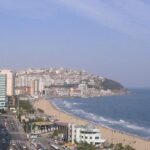
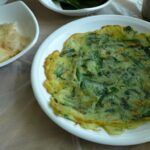
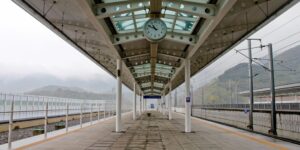

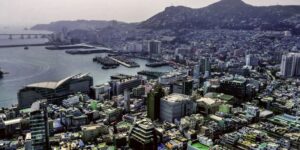
No comment yet, add your voice below!